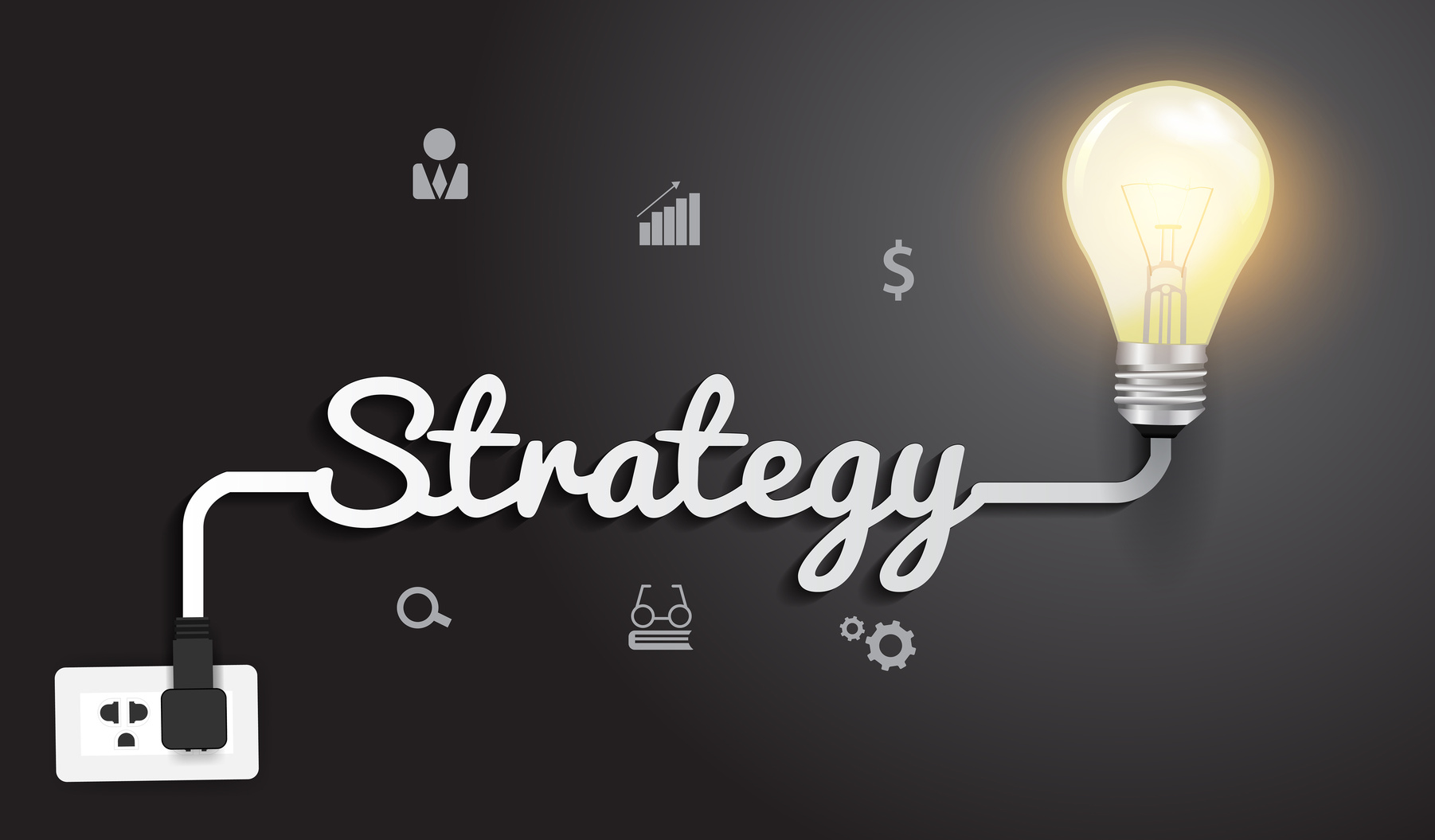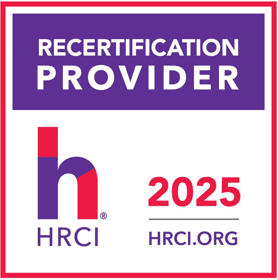What Is It and Why Do You Need It?
You’ve been bombarded with information about Talent Management in recent years. More and more people are in Talent Management positions in organizations. And yet, confusion about what a talent management strategy is, and why it is critical for your business seems to be increasing. The phrase “talent management” seems to be used now for a variety of human
resource functions, which has created the effect of “watering down” the purpose and value of a talent management strategy.
What is a Talent Benchstrength® strategy?
Enter the phrase “Talent Benchstrength” which clarifies the purpose and value of a strategy focused entirely on the retention, performance, succession and development of the great people you have already hired. This is an important distinction, because most organizations have an external recruiting strategy, staff, budget and system, while many organizations do not have a specific strategy, staff, budget and system that are all devoted to building the talent benchstrength of the organization’s current employees.
Why use the phrase Talent Benchstrength?
The term “benchstrength” is often used in the world of sports to refer to the individuals who are being developed as the up-and-coming top talent and first-string players for the team. The team understands that without strong benchstrength, the team is highly vulnerable to talent loss. And, without strong benchstrength, the team will fizzle out and “go out of business” over the years. A college sports team without benchstrength will be “out of business” in a few short years, and the coaches of the team will be on the unemployment line.
The critical importance of having a strong benchstrength strategy is so widely known and completely understood as it relates to talent in the world of sports. Therefore, the phrase Talent Benchstrength can help us in the corporate world by drawing the same correlations between the importance of developing top talent in the sports world and the importance of developing top talent in the corporate world in order to beat the competition and to create sustainable success over the long term.
What are the functions of a Talent Benchstrength strategy?
Often the functions of internal talent retention, performance, succession and development are dispersed and fragmented among different human resource employees or departments, with varying levels of budgets and staffing to support these functions. A Talent Benchstrength strategy and staff can serve to align the functions that will strengthen the organization’s talent benchstrength, just as most organizations already have an external talent acquisition strategy and staff to attract and to hire top talent for the organization.
The functions of the Talent Benchstrength strategy could include Talent Review meetings, Succession Management, Career Planning, Performance Management, Employee Engagement, Organizational Development, Skills Training and Leadership Development. All of these functions serve to retain and develop your current employees, and to increase employee engagement and performance. Additionally, these functions provide talent risk management for the organization, through the discussions of vacancy risk in the Talent Review meetings, and through Succession Management plans and development actions.
Why focus so much time and money on attracting and hiring top talent and then not focus equal time and money on retaining and developing that talent? This is like buying the freshest produce at the whole foods market but then letting it sit in the refrigerator until it becomes inedible and you have to throw it out.
Comparing a Talent Benchstrength Strategy to a Talent Recruiting Strategy
Every successful organization must have BOTH a great Talent Recruiting strategy, staff, budget, system and processes, and a great Talent Benchstrength strategy, staff, budget, system and processes. These strategies serve different purposes, and together they form a complete talent strategy for your organization. Talent acquisition focuses on bringing in new talent and talent benchstrength focuses on continuing to develop that same great talent you hired for the benefit of the organization and for the benefit of the employee.
External recruiting focuses on sourcing, interviewing, evaluating, hiring and onboarding new talent from outside of the organization. This is an important part of the overall talent strategy in every organization to bring in fresh ideas and new skills into your organization, especially for growing and expanding organizations. But becoming dependent primarily on external sources for talent means that you are depending on your competitors to do a better job of developing their talent than you are…and that you are dependent on the assumption of a ready source of top talent from your competitors, even as economic conditions change.
An organization that operates with an external talent acquisition strategy but without an internal talent benchstrength strategy is actually missing 50% of an overall great talent strategy! Imagine if any other functions in your business operated at only a 50% effectiveness rate!
Focusing primarily on an external talent acquisition strategy and focusing little on internal talent benchstrength also means that you will have to pay more for talent to allure them from your competitors into your company, as a basic truth of supply and demand. So you might save money on training and development expenses, only to pay more for salaries and bonuses, in addition to the recruiting time and expenses that will be required for a talent strategy that focuses primarily on talent acquisition.
We can compare the purpose of an external talent acquisition strategy to the purpose an internal talent benchstrength strategy, to see that they provide different functions which together serve as a complete talent strategy in any size, shape or type of organization:
| External Talent Acquisition | Internal Talent Benchstrength |
|---|---|
| A strategy to identify external talent with new ideas and skills to fill vacancies and new growth positions, and to build a strong external candidate pipeline. | A proactive strategy to retain and develop your own top talent and successors, to enhance talent benchstrength, to retain talent and to reduce external recruiting costs. |
Imagine if an organization stopped all financial forecasting, all risk management, and all budgeting, to focus time only on the business at hand today. How long would this organization remain competitive? The same type of risk exists for a company that is not conducting succession planning for risk management and talent review meetings for future success.
Successful businesses use a balanced approach to review past business and talent indicators, to focus on the business and the talent at hand today, AND to identify future goals and talent needs for success and sustainability.
Why Should We Implement a Talent Benchstrength Strategy?
What are the two most critical resources for any successful business? Every business must have a positive cash flow to fund the business and talented people to run the business.
Does your organization have a financial plan, as well forecasting and budgeting processes to identify funds needed to achieve future goals? Of course it does. Does your organization produce financial reports for owners, investors or for shareholders? Of course it does. Does your organization have risk management to identify and to mitigate business risks? Of course it does.
Virtually all organizations have many financial and business strategic processes and analysis tools in place, and the results and indicators are reviewed and discussed regularly. So, if everyone agrees that all businesses must have financial resources and talent resources to be successful, then every business should also have the same type of strategic processes for talent benchstrength as it does for financial and business strength, as shown in the chart below:
| Examples of Financial and Business Strategic Processes | Examples of Talent Strategic Processes | |
| Planning Resources for the Future to Achieve Goals | Financial Modeling and Forecasting Financial Planning and Business Goal Setting Budgeting Procedures Financial Prospective Analysis Market Analysis Corporate Investment Planning Sales Projections | Workforce Analysis Talent Review Meeting Discussions of Talent Needs and Employee Career Interests Talent Assessments Successor Candidate Planning and Development Individual Development Plans and Development Resource Planning |
| Review of Past Performance to Identify Strengths and Improvement Areas | Annual Financial Report Analysis of Real Revenue Growth Cost of Capital Analysis Profit Margin Analysis Cost Control Analysis Return on Equity Metrics Debt-Free Cash Flow Analysis | Performance Appraisals Manager-Employee Career and Development Discussions Talent Review Meeting Discussions of Individual Talent Employee Engagement Surveys Profit Per Employee Metrics Cost of Recruiting / Internal vs. External Fill of Positions |
| Risk Management | Operational Risk Management System Recovery Procedures Market Risk Assessment Safety Procedures Audit Disaster Recovery Plan | Talent Vacancy Risk Assessment Retention Plans for Top Talent Succession Planning for Replacement Positions Documentation of Employee Knowledge and Procedures |
| Reporting Procedures to Track Progress | Budget Variance Reports Monthly Cash Flow Reports Sales Reports Safety Reports Quality Reports | Talent Review Development Action Progress Reports and/or Discussions Exit Interview Analysis Monthly Review of Open Leadership Roles / Internal Talent Turnover Analysis |
How many metrics and procedures does your organization use in the green boxes (in the chart on the previous page) to track and measure business and financial performance and risks? How many metrics and procedures does your organization use in the orange boxes in this same chart to track and measure talent performance and risks?
The overall purpose of a Talent Benchstrength strategy is to provide business focus, planning, risk management and reporting for the critical talent success in organizations, just as the typical organization already does successfully for business and financial success.
A Talent Benchstrength strategy and processes adds new or additional structure, processes, criteria and metrics to the human resources function in the organization to match the structure, processes, criteria and metrics that are used for business and financial functions in the organization. This brings balance to the planning and measurement of the two most crucial factors in a successful business—financial resources and talent resources.
The Competencies of Talent Benchstrength Professionals
Typically when a Human Resources professional begins a Talent Benchstrength role, they are already highly experienced, respected and knowledgeable in HR strategy, procedures, employment law and organizational development. Successful Talent Benchstrength professionals already have years of experience working with leaders at mid and senior levels in the organization.
So what are the additional competencies are needed for a successful Talent Benchstrength professional? Some of the competencies for Talent Benchstrength professionals include:
- The ability to work with confidence with leaders at all levels in the organization
- The ability to work with external Talent Acquisition professionals to complete a workforce analysis and to identify talent expenses, talent pain points, risks and needs for the organization
- Knowledge of the multiple steps of Talent Benchstrength strategic project planning, and the ability to implement and follow-through with Talent Benchstrength actions
- Knowledge of effective succession management strategic planning, as well as successor development actions, development accountability, and metrics
- Talent Review Meeting planning and facilitation skills
- Knowledge of and experience with leadership development resources and metrics
- Knowledge of Talent Benchstrength concepts such as the criteria for high performers, high potentials, key experts, successors, talent pools, critical roles, etc.
- The ability to work with Organizational Development and Training professionals to connect successor development gaps and leadership development needs with the most appropriate resources to leverage strengths and to address development needs
- The ability to identify and to measure the appropriate metrics to determine the progress and the results of the Talent Benchstrength strategy and goals
- The ability to identify and/or to create talent assessment tools and reference materials for leaders prior to Talent Review Meeting discussions, to ensure that leaders are prepared for the meetings and that data is available to make effective talent decisions
The successful Talent Benchstrength candidate must also demonstrate integrity and must be viewed as a trustworthy, credible and respected leader within the organization. And because Talent Benchstrength is still a growing HR function, the successful Talent Benchstrength professional will obtain training, reading material, and a network of other talent professionals to obtain knowledge, tools and new ideas on a continuous basis.
The successful Talent Benchstrength professional demonstrates the highest
integrity and is trusted and respected by leaders in the organization. Successful Talent Benchstrength professionals are strategic and they demonstrate project implementation skills (or they hire another talented person to lead the important project planning functions of the Talent Benchstrength function.)
Talent Benchstrength professionals must also learn new concepts and skills to plan and to implement the Talent Benchstrength strategy, metrics and project plans, and to plan and facilitate Talent Review meetings, Succession Planning, and Leadership Development.
Common Concerns about a Talent Benchstrength Strategy
What are the risks of saying “We don’t have time right now to focus on Talent Benchstrength right now”? What are the benefits of including (or expanding) a Talent Benchstrength in your business planning right now?
| Common Views | This is like… | What are the risks? | What are the benefits if we change our view? |
| We have other business priorities right now…Talent Benchstrength can wait a few years. | …a farmer saying the planting can wait because we are too busy with the farm accounting work to put seedlings in the ground right now. | Just as the farmer could wait too long to plant and completely miss out on that year’s crop, an organization can wait too long to plan for talent needs and completely miss out on top talent who will leave the organization for other opportunities, rather than becoming excellent successors in the organization. | Beginning a Talent Benchstrength strategy and procedures now will enable the organization to not only identify and retain top talent and help prevent high top talent loss, but also allow the time that is needed for the development and on-the-job experiences that create great leaders. |
| We don’t have the budget for a Talent Benchstrength function or for leadership development in our organization. | …a safety engineer focusing on accidents, rather than identifying funds to provide safety training and to implement safety procedures to prevent accidents. | Just as a manufacturing organization without safety training and procedures would incur hefty expenses, an organization that only focuses on external recruiting without a Talent Benchstrength strategy also incurs hefty expenses for recruiting and search fees. | Implementing a Talent Benchstrength strategy can lower external recruiting costs, executive search fees, interviewing time, and the time-to-fill period for vacancies. Also, top talent loss can be prevented through talent vacancy risk assessment, retention plans and development actions. |
| We don’t have any staff devoted to Talent Benchstrength functions so this is not something we can focus on at this time. | …a business with no staff to lead budgeting or to review cash flow, because their staff only focuses on reviewing past financial metrics. | Every business knows that focusing only on past financial performance indicators while failing to forecast, to review cash flow, and to budget will eventually experience a negative cash flow. Similarly, a business that only conducts performance appraisals to review past employee performance indicators but fails to identify future talent needs, fails to address talent vacancy risks, fails to identify and develop successors, and fails to retain and develop future leaders will eventually experience a “negative talent flow”. | One key question to review—how many external Talent Acquisition staff work in your organization? (Include contract recruiters and external search firms used by your company.) If your organization employs and/or contracts with multiple external talent personnel, why would this same organization not also have at least one Talent Benchstrength professional? A balanced talent approach that focuses on developing the great people you already hired results in greater talent retention, and greater internal fill of open positions, which can lower recruiting costs and eliminate some significant external search fees. |




